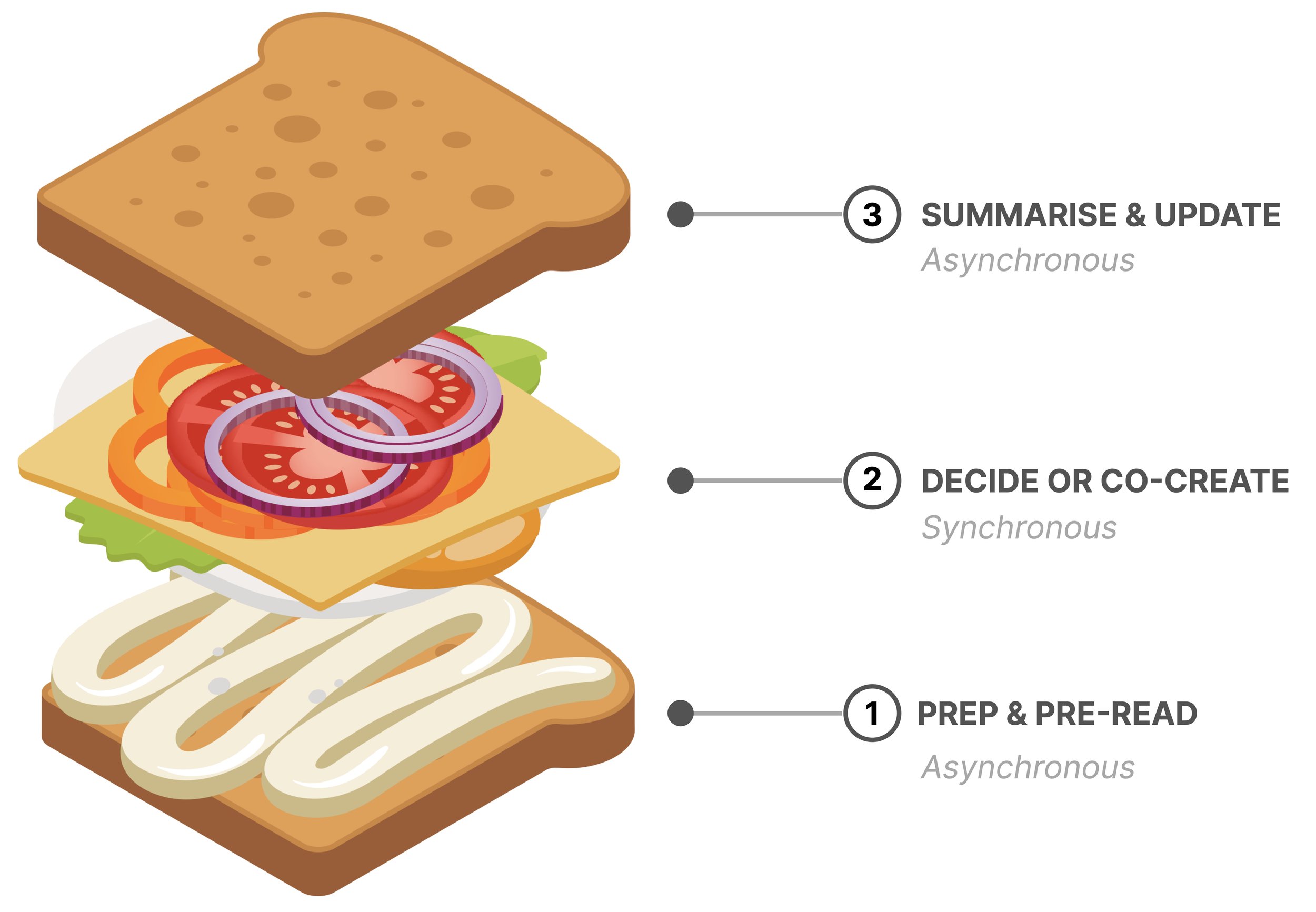I screwed up
Summary
Writing the book about “async-first” collaboration doesn’t mean that I’m immune to the status quo. I screwed up on my own rules recently, by taking a “sync-first” approach instead. And boy, did that hurt!
Your discipline is as good as the last time you broke it. A few weeks back, a couple of us violated our discipline of being “async-first”, and it hurt us. In today’s post, I want to come clean on that screw-up.
I’ve often referred to the idea of treating communication as a process and not an event. This translates to an “async-first, sync-next” or “async-first, sync-maybe” approach. When you begin a communication process by sharing an artefact first, it literally helps people get on the same page. Often, getting on the same page can be the end in itself. Sometimes, you may need a real-time conversation as a follow-up to such a shared agreement. Do this day in and day out, and you’ll see yourself become more efficient with decision-making. You’ll also use each other’s time effectively, and reduce misunderstandings, to resolve which, you’ll need more meetings and interruptions.
But what if you break this discipline? Let me tell you what happened to me.
Of good intentions and screw ups
This story began when my boss and I were contemplating a significant change in our ways of working. The details of the change are irrelevant. What’s important is that we knew the change was significant. So, with all good intentions, we decided my boss would discuss the change with people in separate meetings and gauge how they felt. Once he’d got a sense of everyone’s comfort, we’d send out a note confirming the change. Easy as, right? Wrong!
My boss went ahead and had those conversations. He also sent out the email. Surprise, surprise, it didn’t go well. Some colleagues didn’t expect the change to be what they saw in the email. Other teammates didn’t see the change coming. They thought of the conversations as only a way to seek informal opinions. People had an inconsistent understanding of the change. It was the classic case of the blind people and the elephant. For a team, that took pride in “async-first, sync-next”, we’d done the exact opposite. And we hurt that day. Our approach made people feel we were being prescriptive. In our minds though, we’d been consultative, with the “conversations first” approach. Clearly, we’d misjudged the situation. We’d screwed up.
Without a written artefact, it’s hard to achieve shared understanding
When you’re wrong, please right the wrong
What did we do next? First, it was important to acknowledge the screw-up. We’d reversed our decision-making process with good intentions, and it hadn’t gone well. I suggested we slow things down. Remember “Festina Lente”? It means “make haste slowly”. There was no urgency for us to decide. We’d waited long already but a week more to decide wouldn’t hurt us. I set up a meeting in a week, so we could reach an agreement.
In parallel, I reviewed the document where I’d written up the proposed change. I noticed it explained the change, but not the rationale for it. I made those improvements and added an FAQ to it so everyone could understand our line of thinking. Everyone who wished to weigh in on the decision was to read the document before the meeting.
In the end, it all worked. For most people, the change was less contentious than we made it seem. People who had concerns, saw them addressed in the FAQ. If someone had a question we hadn’t answered, we enriched the FAQ further. By the time we got to the meeting, it was a mere formality. Everyone was on board.
It doesn’t change the fact though, that we could have saved everyone the heartache if we’d eaten our dog-food of “async-first, sync-next”. Our colleagues were generous enough to trust our intentions. A bigger screw-up may have eroded trust in the team, irreparably.
The moral? Make a sandwich.
I hope this story is instructive enough to tell you why you must follow the “async-first” approach. To add a bit of colour to this conclusion, let me leave you with a metaphor I learned from Matt LeMay. Matt describes a synchronous sandwich approach to communication. It’s a simple, three-step process.
Step 1. Share an asynchronous pre-read, before any meeting. Invite people to not just read, but also reflect, by adding questions and comments to the document. As a facilitator, you can address some of these questions and comments well before the meeting, if you like.
Step 2. Follow up the reading with a time-boxed, synchronous conversation. Use this for high-bandwidth, low-latency exchange of ideas, so you can solve a problem together, or decide on something based on the information you have from the reading.
Step 3. Summarise the meeting asynchronously. Meeting minutes are an excellent way to do so, and any next steps and actions you agree on should make their way to your task board as well.
The synchronous sandwich, by Matt LeMay
If your team isn’t diligent about reading, Matt recommends the idea of silent meetings - an idea I’ve advocated for, several times on this site. I love Matt’s metaphor of a sandwich though, because it’s memorable, and it summarises the idea that async-first needn’t be async-only. It’s not a part of my book, but hopefully, Matt will someday write a book where he’ll include this concept.
Net, net - learn from my mistakes. As Randy Pausch said,
“Experience is what you get when you don’t get what you wanted”.
The great thing about experience though, is that you don’t need to gain it yourself. I made your mistakes for you. Now you can go do it right!



